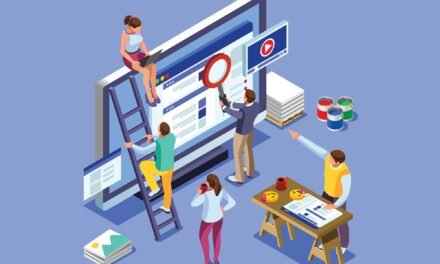The leather industry plays a significant role in shaping the socio-economic status of Panapakkam’s residents by providing employment, driving local economic growth, and fostering community development. Here’s how the leather industry impacts the socio-economic status of the area:
1. Employment Generation
- Direct Employment:
- The leather industry in Panapakkam is a major source of employment for the local population, particularly in leather manufacturing, processing, and accessory production. Jobs are created in various sectors such as tanning, cutting, stitching, embossing, finishing, and quality control.
- Employment opportunities are available at different skill levels, ranging from entry-level positions to skilled artisans, and managerial roles.
- Skilled Labor Development:
- Training programs, such as those provided by the Leather Sector Skill Council (LSSC), Footwear Design & Development Institute (FDDI), and Central Leather Research Institute (CLRI), are helping to upskill the workforce. This enables residents to develop expertise in leather processing, design, and management, opening up higher-paying, specialized career opportunities.
2. Increased Incomes and Livelihoods
- Wages and Income Growth:
- Employment in the leather industry often provides higher wages compared to traditional agricultural or unskilled labor jobs. Skilled workers, such as leather craftsmen, technicians, and supervisors, earn competitive salaries, which directly improve their socio-economic standing.
- Over time, as workers gain experience and skills, they can transition into more senior positions, leading to higher wages and better living standards.
- Income Diversification:
- The leather industry also allows for diversified income streams, with many residents starting small businesses related to leather goods production, retail, or maintenance services, such as leather repair shops.
3. Support for Local Businesses
- Supply Chain Benefits:
- Local businesses that support the leather industry, such as suppliers of raw materials, logistics companies, and accessory manufacturers, also benefit economically. This creates a broader economic ecosystem in Panapakkam that raises the standard of living for many families.
- Entrepreneurial Opportunities:
- The growing leather industry provides opportunities for residents to establish their own businesses in related sectors like leather design, upcycling, and small-scale manufacturing. Government-backed schemes and skill development programs encourage entrepreneurship, further contributing to economic independence.
4. Infrastructure Development
- Improved Local Infrastructure:
- As the leather industry grows, investments in infrastructure such as roads, utilities, and transportation networks improve. These developments have a direct positive impact on the quality of life for residents, making it easier to access markets, resources, and jobs.
- Industrial Parks and Facilities:
- The establishment of specialized zones like the MLFAC Industrial Park and other clusters fosters better industrial practices, ensuring higher-quality production and cleaner, more sustainable operations, which contribute to the overall development of the area.
5. Social and Educational Development
- Access to Education and Training:
- The growth of the leather industry has spurred investments in educational institutions that specialize in leather technology and design. These institutions provide training and certification programs, helping residents acquire skills that lead to better job opportunities.
- Improved Social Status:
- As Panapakkam’s leather industry expands, the socio-economic status of residents rises. With higher-paying jobs and entrepreneurial opportunities, many families experience increased access to better healthcare, housing, and educational opportunities for their children.
6. Community Welfare and Local Development
- Health and Well-being:
- Increased income from the leather industry allows families to afford better healthcare, leading to an overall improvement in health standards. Many families can access health insurance and medical services, enhancing their well-being.
- Women’s Empowerment:
- The leather industry has also provided opportunities for women in Panapakkam, especially in areas like stitching, leather goods production, and management. This creates greater gender equality and empowers women by providing economic independence and leadership roles.
7. Export Revenues and Economic Contribution
- Boost to Local Economy:
- As Panapakkam’s leather industry grows, it contributes significantly to local and national economies through exports. India is one of the largest exporters of leather products, and Panapakkam plays a key role in this. The success of leather exporters brings foreign currency into the local economy, which can be reinvested in infrastructure, public services, and further economic activities.
- Attracting Foreign Investment:
- The leather sector’s success also attracts foreign investment, leading to the establishment of international partnerships and expansion of export markets. This influx of investment supports economic stability and growth, which benefits local communities.
8. Environmental and Sustainability Considerations
- Sustainable Practices:
- With increasing global demand for sustainable and ethically produced leather, Panapakkam’s leather manufacturers are adopting eco-friendly practices such as vegetable tanning, chrome-free leather, and the use of biodegradable materials. This shift to sustainable production not only improves the global competitiveness of the region but also promotes long-term environmental benefits for local communities.
- Waste Management and Recycling:
- Many manufacturers are focusing on recycling leather waste and reducing pollution, which improves the environmental quality in Panapakkam. This has positive effects on the health and well-being of the local population, contributing to a better living environment.
9. Social Mobility
- Improved Living Standards:
- With the growing employment opportunities in the leather sector, many families in Panapakkam can experience upward social mobility. Workers who start in lower-income positions can advance through skill development, gaining access to managerial and supervisory roles.
- Migration and Skill Development:
- Panapakkam’s increasing importance in the leather industry also attracts workers from other regions. These workers bring new skills and contribute to a more dynamic labor market, further raising the overall socio-economic status of the region.
Conclusion
The leather industry in Panapakkam has a profound impact on the socio-economic status of its residents. By creating jobs, providing better wages, supporting local businesses, and enhancing infrastructure and education, the industry is improving the quality of life for many in the region. The growing demand for sustainable and innovative leather products also presents new opportunities for the future, ensuring continued economic and social development in Panapakkam.
Hashtags
#PanapakkamLeatherImpact #SocioEconomicGrowth #MLFACCommunityBenefits #LeatherIndustryDevelopment #PanapakkamEconomicBoost #EmploymentInLeather #CommunityEmpowermentTN #LeatherSectorOpportunities #PanapakkamResidentWelfare #EconomicDevelopmentTN







